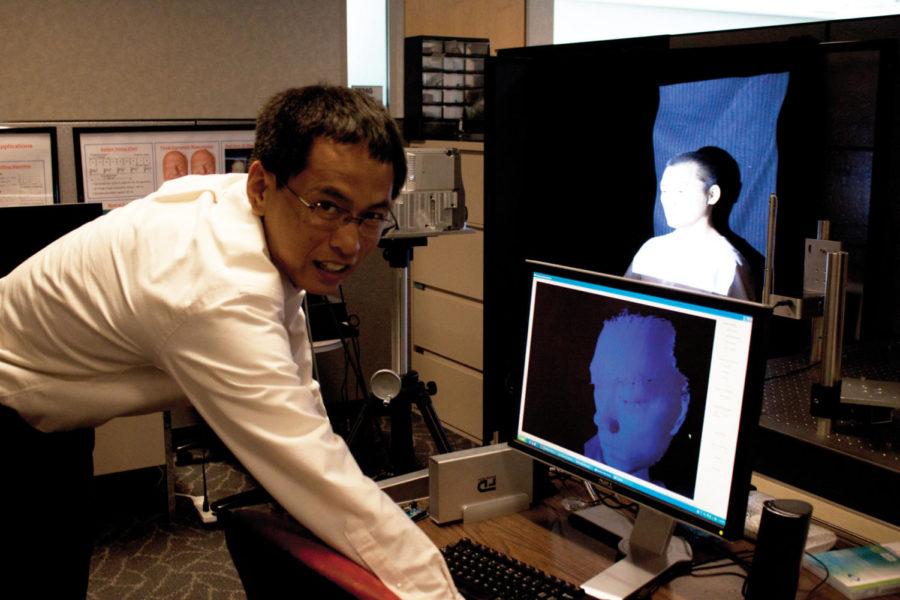ISU catalogs 4,000th patented invention
April 5, 2012
Iowa State’s Research Foundation, Inc., and the Office of Intellectual Property and Technology Transfer has recently cataloged the 4,000th university researcher invention.
The 4,000th invention, based on the current numbering system that was established in 1964, is Song Zhang’s 3-D compression software. Zhang is an associate professor of mechanical engineering.
“The idea is to convert 3-D frame data into standard 2-D image format to save data storage space,” said Zhang, who has been working with 3-D technology for more than a decade. “And to make it easier to transport to other places, such as streaming them through a network.”
Inventions that are turned in to the Research Foundation and the Office of Intellectual Property and Technology Transfer are reviewed for patentability and potential for commercial use. The commercial applications of 3-D imaging has dramatically increased over the last five years as a result of the popularity of 3-D movies and televisions, so Zhang’s technology has the potential to be very useful to companies who want to work with 3-D data.
“I would say that 3-D technology will be as widely used in the future as 2-D technology is nowadays,” Zhang said. “From cell phones to TV and YouTube, monitors will all have 3-D functionalities and 3-D cameras will be embedded into those devices as well.
While 3-D technology has developed significant entertainment value, there is also a future for 3-D in medical and scientific outlets. However, the success of 3-D integration into other facets hinges on the data’s ability to be saved, stored and transferred like other 2-D elements.
Zhang’s invention was a result of his own struggles to store 3-D data while he worked to develop a high-speed 3-D imaging system for the diagnosis of lung cancer.
Now that he has come up with software and code that can save data storage space, Zhang is looking forward to continuing his work with the 3-D technology.
“My future research will focus on three major issues,” Zhang said. “Keep making breakthroughs in 3-D imaging technology itself, apply the 3-D imaging technology to facilitate the research of other scientific areas, and develop low-cost inexpensive 3-D cameras and video cameras for our daily use.”
Iowa State learned a lesson 70 years ago about protecting inventors and their innovations when John Mauchly and John Eckert Jr. patented the first general-purpose electronic digital computer that contained several aspects that had been invented by Iowa State’s own Dr. John Atanasoff. Atanasoff’s computer was not patent protected, and he did not receive recognition for his work until a legal battle won him acknowledgment in 1973.
“This shows the long history we have of faculty and other inventors working to find solutions that will bring benefit to society,” said Lisa Lorenzen, executive director of the Research Foundation. “Inventions are important because they represent one mechanism for the translation of the ideas and research carried out at Iowa State into products and processes that benefit others.”







